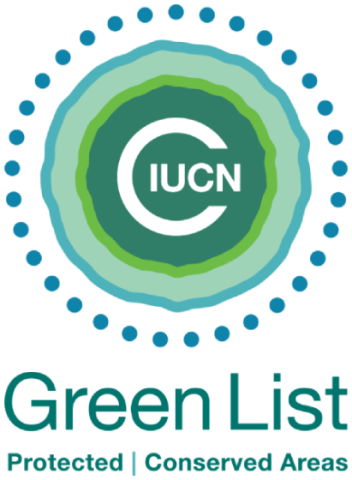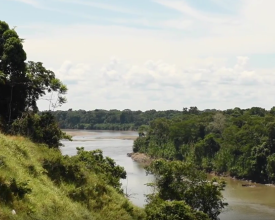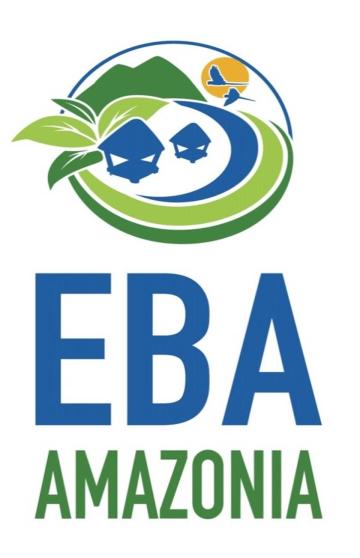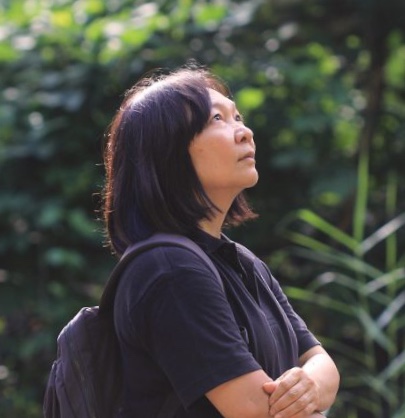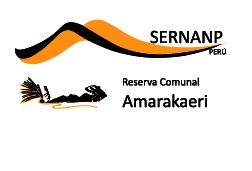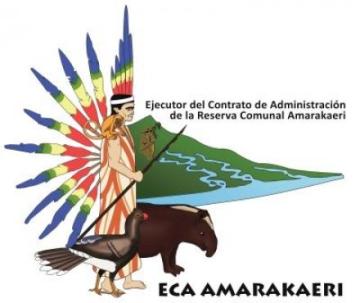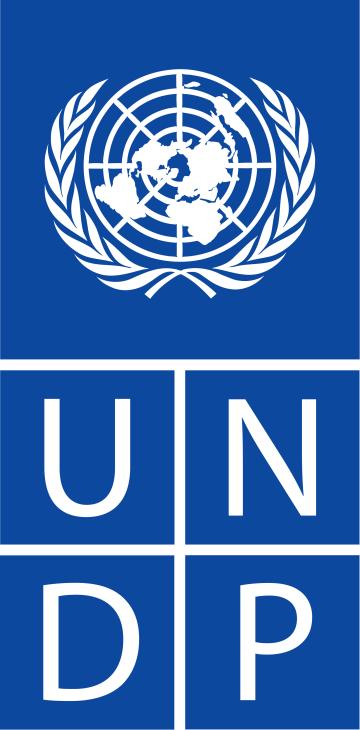
Conservation des forêts dans les communautés de Boca Isiriwe, Masenawa et Puerto Azul, réserve communale d'Amarakaeri
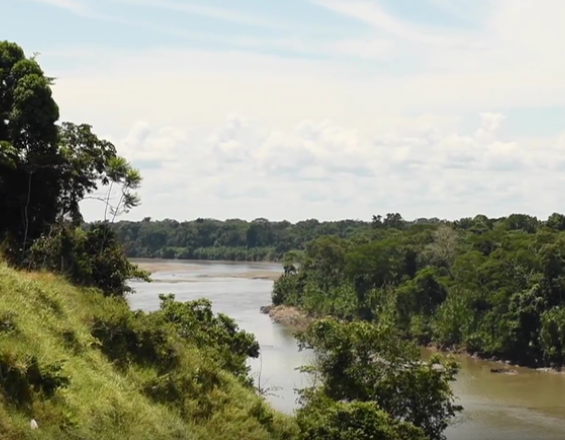
La réserve communale d'Amarakaeri a été créée à l'initiative de dix communautés indigènes afin de préserver la multitude de services écosystémiques tels que la nourriture, les abris, les médicaments et l'eau. La réserve contribue à la protection de deux bassins hydrographiques. Elle garantit la stabilité des terres et des forêts, en maintenant la qualité et la quantité d'eau nécessaire au développement des communautés indigènes qui souffrent de plus en plus des sécheresses et des inondations. Les communautés ont inclus dans leurs plans l'utilisation des noix du Brésil comme moyen de générer des ressources économiques.
Contexte
Défis à relever
La prise en compte des impacts du changement climatique ne doit pas limiter les choix des individus en matière de développement personnel et familial. Le concept d'"adaptation au changement climatique" consiste à adapter ce que l'on veut faire (dans ce cas, des activités productives) aux changements actuels ou attendus. Les défis sont les suivants :
- Rassembler les informations nécessaires pour adapter l'activité productive aux conditions futures.
- Remplacer, réduire ou modifier les moyens de subsistance actuels des populations locales (exploitation forestière, exploitation minière).
- Clarifier la relation entre les habitudes humaines et le développement durable (éradiquer l'idée que les autres sont à blâmer).
Emplacement
Traiter
Résumé du processus
L'instauration de la confiance avec la communauté et les partenaires locaux (BB1) est une condition préalable à la sélection des mesures d'adaptation (BB2) et à la mise en œuvre des mesures d'adaptation.
- sélectionner les mesures d'adaptation (BB2) et
- la collecte d'informations pour adapter l'activité de production aux conditions écologiques, sociales et climatiques (BB3) et
- la mise en œuvre des accords de conservation (BB4) et
- améliorer le transfert des connaissances aux gouvernements locaux et l'adoption des mesures.
Blocs de construction
Instaurer un climat de confiance avec la communauté et les partenaires locaux
La mise en œuvre d'un nouveau projet nécessite l'acceptation sociale de la population locale. Les objectifs, les stratégies à suivre, l'approche conceptuelle de la mise en œuvre (dans ce cas, l'adaptation au changement climatique basée sur les écosystèmes) doivent être communiqués et les mécanismes de communication et de coordination de la mise en œuvre doivent être établis.
Le projet EbA Amazonie, mis en œuvre conjointement avec le SERNANP et les ECA(Ejecutor del Contrato de Administración de la Reserva / Exécuteur du contrat administratif de la réserve communale) - représentants des communautés - doit présenter un front uni avec tous les acteurs impliqués. Ainsi, dès l'entrée des communautés, le projet a établi des rôles concrets pour tous les acteurs dans la mise en œuvre des activités (par exemple, le SERNANP et les ECA). Cela génère une vision d'unité et de projection des activités au-delà de la durée de vie du projet (durabilité) puisque le SERNANP et les ECA sont des entités qui interagissent perpétuellement avec la population locale.
Facteurs favorables
- Impliquer tous les partenaires du projet dans chaque visite sur le terrain en fonction de leurs rôles et responsabilités.
- Ouverture, honnêteté, responsabilité et ponctualité.
- Acceptation des objectifs du projet par la population locale.
- Langage clair et simple et langue locale.
Leçon apprise
- Toujours impliquer les partenaires locaux du projet - membres de la CCE et du SERNANP - ce qui renforce la confiance et la durabilité, au-delà de la durée de vie du projet.
- Impliquer les gouvernements locaux dès le début du projet.
- Il est difficile de respecter tous les accords conclus dans le cadre d'un projet qui comporte de nombreux fronts d'action (plusieurs activités à la fois).
- Il est difficile de respecter les délais pour les activités impliquant des institutions dont les procédures administratives sont longues (comme le PNUD).
- Il est difficile de communiquer à la population locale la complexité des procédures administratives. Selon la perception de la population locale, le projet dispose de fonds et ne demande qu'à les dépenser.
Sélection des mesures d'adaptation
Le processus de sélection des mesures d'adaptation est l'un des piliers de l'élément de base 1 (Établir la confiance avec la communauté et les partenaires locaux), mais c'est aussi un élément de base important qui doit être développé avec la communauté. L'approche adoptée consiste à fonder la sélection des mesures sur les connaissances et les préférences locales de la population. Cela signifie que c'est elle qui décide quelle(s) activité(s) est/sont la/les plus appropriée(s) pour elle(s). Ils ont une bonne connaissance de la réalité locale en termes d'opportunités et de défis et il suffit de leur poser des questions indicatives pour déterminer avec eux les conditions de mise en œuvre d'une certaine mesure d'adaptation. Il existe des outils conçus à cet effet, tels que CARE "Climate Vulnerability and Capacity Analysis" et CRiSTAL (Toolkit for Integrating Climate Change Adaptation into Development Project).
Facteurs favorables
- L'ouverture des animateurs de l'atelier à accepter des propositions et à guider la population dans sa prise de décision sur les mesures d'adaptation à mettre en œuvre au sein de la communauté.
- Il est essentiel que les animateurs d'ateliers aient des connaissances en matière de développement rural, d'adaptation au changement climatique et de techniques d'animation.
Leçon apprise
Il ne devrait pas y avoir d'obstacles techniques pour qu'une population ou d'autres agents de changement mettent en œuvre une activité productive en tant que mesure d'adaptation au changement climatique. L'assistance technique que le projet devrait fournir consiste à rechercher toutes les alternatives d'adaptation possibles et à adapter les formes de production existantes aux impacts attendus selon les modèles climatiques.
Informations de soutien sur la manière d'adapter une activité aux conditions écologiques, sociales et climatiques (cas de la noix du Brésil)
Les communautés indigènes de Boca Isiriwe, Masenawa et Puerto Azul ont décidé de commencer à utiliser les châtaigniers(Bertholletia excelsa) qui existaient sur leur territoire, bien qu'elles n'aient aucune expérience préalable dans ce domaine. La première exigence ou condition établie par le projet EBA Amazonía était d'exclure la possibilité de contamination des fruits par des métaux lourds. Des échantillons de sol et de fruits ont été prélevés. Aucun résidu significatif n'a pu être trouvé, malgré la proximité d'exploitations minières.
Le projet les a soutenus car cette activité correspondait bien à l'approche écosystémique adoptée par le projet.
Une base de données complète sur la présence et la distribution de l'espèce a été créée afin de modéliser les changements que l'espèce subirait sur la base des informations climatiques actuelles et futures. D'après la modélisation, le châtaignier restera une espèce largement répandue dans toute la zone de la réserve communale d'Amarakaeri, avec de légers changements dans sa distribution. Le projet a ainsi répondu à l'intérêt local en fournissant les informations nécessaires pour garantir un processus de production durable.
Facteurs favorables
- Le projet EbA Amazonía a planifié à l'avance la fourniture d'informations scientifiques. Les ressources et les capacités nécessaires à la réalisation des études étaient disponibles.
- Bonne connaissance des ressources forestières : même si les communautés n'utilisaient pas le châtaignier auparavant, elles savaient qu'il existait et où il poussait.
Leçon apprise
- La vulnérabilité humaine (au changement climatique ou à d'autres facteurs de changement) n'est ni statique, ni unidimensionnelle, ni unidirectionnelle. Elle est multiforme et peut évoluer rapidement en fonction des prises de décision.
- En revanche, l'analyse de la vulnérabilité d'une espèce végétale (ici la châtaigne) est moins complexe et plus fiable (moins d'incertitude) car il suffit d'analyser les variables biophysiques et les variables d'exposition au changement climatique ou à d'autres facteurs de changement.
- L'utilisation des résultats de l'analyse est très utile à la population locale pour déterminer ses zones d'intérêt pour la protection du châtaignier qui, à leur tour, peuvent être destinées à d'autres usages à faible impact écologique.
Accords de conservation
Les accords de conservation font partie intégrante de la viabilité financière des mesures d'adaptation au changement climatique et de l'intégrité spatiale des réserves communales. En étendant les zones de conservation et d'utilisation durable des ressources de la réserve communale, ils permettent l'utilisation du territoire communal tout en autorisant l'utilisation de la zone naturelle protégée adjacente.
Les accords de conservation contribuent à l'harmonisation de la gestion et de la planification du territoire communal en consolidant les utilisations autorisées de leurs zones dans un contrat avec les autorités compétentes (ECA et sièges des aires protégées nationales). En retour, les communautés gagnent des alliés clés pour continuer à obtenir un soutien technique et financier afin d'étendre les activités productives (mesures d'adaptation) qui ont été initialement soutenues par le projet EbA Amazonía.
Facteurs favorables
- Mesures d'adaptation en phase de mise en œuvre ou de conception.
- Mécanismes de financement public identifiés et disponibles.
- Les autorités s'engagent auprès de la population locale.
Leçon apprise
L'élaboration d'accords de conservation aurait dû être initiée dès le début de la conception et de la construction des mesures d'adaptation en tant qu'exigence de base.
Transfert de connaissances aux gouvernements locaux et adoption de mesures
Les projets de coopération tels qu'EbA Amazonia sont des agents de développement qui vont et viennent. En revanche, les institutions publiques, qu'elles soient nationales, régionales ou locales, sont permanentes et ont pour principal objectif d'assurer le bien-être des communautés dans une zone spécifique. Les gouvernements locaux sont proches de la population rurale.
Le transfert de capacités est une autre question importante du point de vue du projet.
Il est fondamental de rendre l'approche de développement des municipalités compatible avec l'approche de conservation d'une zone protégée afin d'obtenir des alliances pour la conservation d'une zone et le développement de la population environnante. Ceci est lié au bloc de construction 4 - la création d'accords de conservation entre une communauté et ses alliés stratégiques constitue une base solide pour canaliser le soutien des gouvernements locaux dans le développement et la mise en œuvre de mesures d'adaptation. Dans le même temps, les informations et la formation sur la manière d'accéder au système d'investissement public de l'État pour les gouvernements locaux élargissent leur capacité à servir la population locale et à accéder à différentes sources de financement.
Facteurs favorables
- L'information et l'accès aux investissements publics et aux programmes de soutien rural.
- Disposer de capacités de dialogue politique.
Leçon apprise
- Impliquer les autorités locales dès le départ.
- Cartographier et localiser les mesures d'adaptation en fonction de chaque type de programme public de soutien rural et financier.
Impacts
- Évaluation d'un produit forestier non ligneux : La commercialisation des châtaignes est une excellente alternative qui contribue à la protection des forêts, à l'atténuation du changement climatique et à la fourniture de multiples services écosystémiques. La communauté Boca Isiriwe a demandé au Service national des zones naturelles protégées par l'État (Servicio Nacional de Áreas Naturales Protegidas por el Estado - SERNANP) de développer cette activité comme alternative à l'exploitation forestière illégale, leur permettant ainsi de générer des revenus. Le projet EbA Amazonía a entamé des communications avec les communautés afin d'organiser des formations sur les techniques de récolte durable des noix, de manière à ce qu'elles puissent être incluses dans le plan de vie de la communauté et dans le plan directeur de la réserve. La participation des membres de la communauté a été de plus en plus importante - l'initiative a commencé avec quelques partenaires et en compte aujourd'hui 36.
- Augmentation des revenus de la population locale : Cette solution répond au besoin économique des communautés de rechercher d'autres formes de revenus compatibles avec la réserve, ce qui leur permet de satisfaire les besoins éducatifs de base de leurs enfants.
- Valorisation de la forêt et de ses biens et services : Le principal résultat de l'utilisation des noix du Brésil est qu'elle est rentable car le coût de production est inférieur au prix de vente dans un rapport coût/bénéfice approximatif de 2/3.
- Organisation sociale pour l'aménagement du territoire.
Bénéficiaires
Directement : communautés indigènes de Masenawa, Boca Isiriwe et Puerto Azul - 36 communautés indigènes.
Indirectes : communautés indigènes de San Jose del Karene, Puerto Luz, Barranco Chico, Diamante, Shipetiari, Shintuya et Queros - 1716 membres de la communauté.
Objectifs de développement durable
Histoire
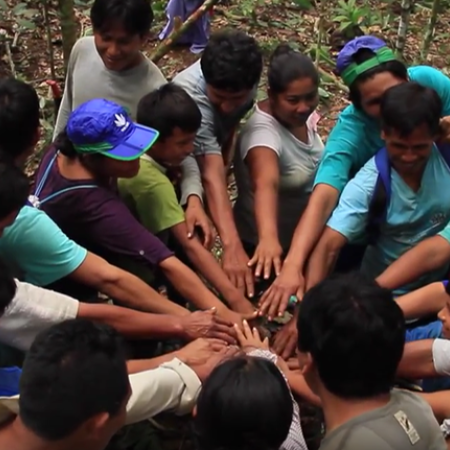
La réserve communale d'Amarakaeri a été créée à l'initiative de 10 communautés indigènes afin de conserver leur territoire ancestral et la multitude de services tels que la nourriture, le logement, la médecine et l'eau. Sa création vise à contribuer à la protection des bassins des fleuves Madre de Dios et Colorado afin d'assurer la stabilité des terres et des forêts pour maintenir la qualité et la quantité de l'eau, l'équilibre écologique et un environnement adéquat pour le développement des communautés indigènes Harakmbut. Trois de ces communautés, qui souffrent le plus des sécheresses et des inondations, ont inclus pour la première fois l'utilisation du châtaignier(Bertholetia excelsa) comme mesure pour obtenir des revenus économiques, diversifier les sources de revenus et protéger les ressources naturelles dans leurs plans de vie. L'objectif global du projet EbA Amazonia - qui est cogéré par le SERNANP, la CEA-AMARAKAERI et le PNUD - est le suivant : Réduire la vulnérabilité des communautés indigènes au changement climatique, en augmentant leur capacité d'adaptation grâce à l'incorporation de stratégies d'adaptation communautaire et de stratégies basées sur les écosystèmes dans la gestion durable des réserves communautaires. Cela contribuera aux moyens de subsistance durables de ces communautés indigènes et garantira la conservation d'environ 500 000 hectares de forêts à haute valeur de conservation. Avant que l'utilisation du châtaignier ne soit introduite dans les trois communautés, il y avait eu un conflit entre la communauté de Boca Isiriwe et la direction de la réserve en raison de l'exploitation forestière illégale dans la réserve communale d'Amarakaeri.
Face à cette situation, la communauté a demandé au SERNANP de soutenir le développement d'activités économiques alternatives qui permettraient aux communautés de générer des revenus pour leurs familles. En ce sens, la direction de la réserve a proposé l'utilisation du châtaignier sur leurs terres communales et, à l'avenir, dans la réserve communale d'Amarakaeri. Le projet a initié la communication et la coordination avec les communautés pour les former aux techniques de récolte durable des châtaignes afin qu'elles puissent être incluses à la fois dans le plan de vie de la communauté et dans le plan directeur de la réserve. Le processus a débuté en 2014. Au cours de cette courte période, les membres de la communauté se sont progressivement impliqués, avec une confiance croissante dans la proposition et dans les représentants du projet. Le processus a commencé avec un membre par communauté et, à ce jour, il compte déjà 36 membres issus de trois communautés différentes.
